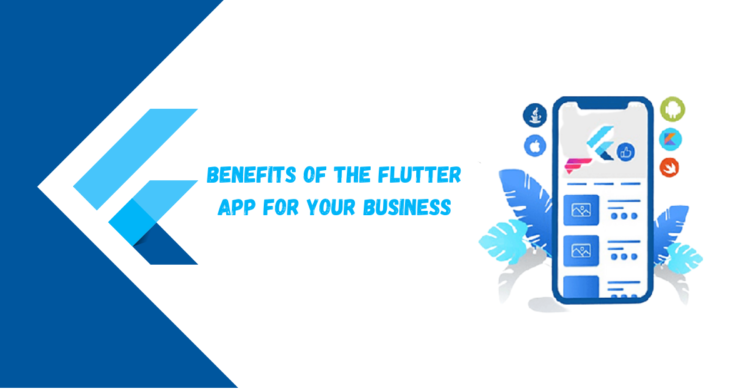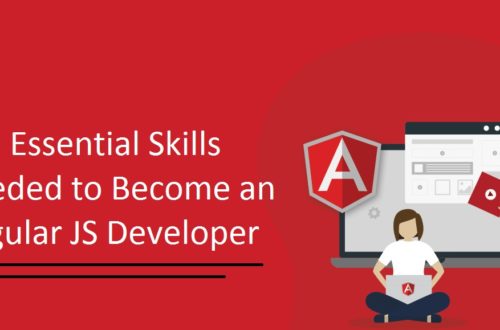Benefits of the Flutter App for Your Business

For many programmers, Flutter has finally alleviated a persistent problem. It used to be the case that developers who wanted to distribute their apps on both the App Store and the Play Market had to duplicate their efforts by making two distinct versions of their apps.
Furthermore, they had to deal with the hassle of managing two independent code sets. What’s more, if the app didn’t seem right, it might be because the designers didn’t account for every conceivable screen size, even the most recent models of certain smartphones.
Remember that these devices’ varying diagonals represent different operating systems.
Flutter was developed as an answer to solve several issues. It is the tool for development that enables the creation of cross-platform apps without any additional effort on the developer’s part.
This is the primary benefit of using the Flutter framework for app development, and it’s only one of many. When it comes to cross-platform app development tools, Flutter shines brightest. So, let’s explore the reasons why developers love Flutter so much.
Advantages of Using Flutter for App Development
The Stack Overflow Developer Survey of 2022 also placed Flutter in the top ten most popular technologies at number six. In mobile app development, 42% of developers have utilized the cross-platform Flutter framework.
We’ll explore the many benefits that have contributed to its widespread acceptance:
- Flutter is a framework for creating apps that can run on several platforms
In that case, what is the function of Flutter? This SDK allows you to create programs compatible with desktop, mobile, and web platforms without hiring dedicated developers. Flutter is a cost-effective app development approach since its code must be written once, regardless of the target platform.
Also, because Flutter app development services require a single code change, introducing new features to your app is fast and efficient. This method is advantageous since it lets you focus on the app’s core features and user experience rather than platform-specific code.
- Multi-Platform Architectures
In general, code may be shared across platforms using a cross-platform framework. Conversely, Flutter stands out since it facilitates the joint reuse of UI code and UI assets.
Here is where Flutter shines in comparison to competing frameworks.
It may seem like an easy procedure for a cross-platform framework to create an app that seems native on every device, but quite a few subtleties are involved. Most use platform-specific rendering components, necessitating a platform-specific property mapping layer and synchronization of framework widget data.
It adds more work to the development process, particularly when translating animations into a widget call that works across all platforms. But, Flutter makes it such that you may render the UI without using any platform-specific UI components. A blank sheet of paper is all that Flutter needs to unleash your artistic genius. It streamlines production by doing away with extra mapping steps.
This method streamlines the rendering process and eliminates worries about UI uniformity between platforms. Moreover, since the UI and business logic can be shared, Flutter reduces development time and effort without sacrificing product performance.
- The “Hot Reload” function allows for rapid development.
The hot reload functionality in Flutter is a fantastic time-saving feature. A team of Google engineers created this function to facilitate rapid iteration and enhance developer efficiency.
Hot reload simplifies testing, user interface development, feature adding, and issue correction.
It updates the Dart VM with the latest source code files (VM). With hot reloading, developers may see the results of their work instantly, with a wait of less than a second between saving their work and seeing the results of their modifications.
- Advanced User Interface Personalization
Flutter makes implementing many alterations to the user interface simple, even for more intricate designs than would normally be possible on native platforms. Flutter makes it easy to accomplish things like clipping and transformations and ease between two states of a shared element, changing its shape, color, shadow, and so on.
This increases the process’s flexibility without significantly increasing the associated effort. Due to the widespread usage of Flutter’s tools and libraries, 7.2% of the community has decided to utilize Flutter.
- Variety of Powerful Widgets
Widgets serve as the building pieces for Flutter applications. You may use them to design and develop UI elements like buttons, text, and input fields for your program. Flutter widgets are created with Android’s Material Design principles and Apple’s Cupertino aesthetic in mind.
Making the user interface look and feel right might be the most time-consuming part of developing for many platforms, but with these widgets, you can do it in a fraction of the time.
- Access to Native Features
Companies with limited budgets often turn to mobile web pages and advanced web applications (PWAs) as an alternative to costly native app development. Yet, these options usually don’t measure up. Flutter is a free and simple method to get the performance of a native app while just having to learn one framework; thus, it’s a great option.
Unlike many cross-platform frameworks, Flutter does not depend on intermediary code representations or interpretations. Instead, applications developed with Flutter are compiled straight into machine code, eliminating performance issues caused by interpretation.
How the Flutter Framework Evolved?
Flutter has come a long way since it was first introduced as a mobile SDK for developing native Android and iOS applications from a common codebase. In 2021, with the introduction of Flutter 2, the framework acquired support for developing applications for both the web and Windows.
Flutter 3 in 2022 introduced solid support for Linux and macOS on Intel and Apple Silicon CPUs. It opens up the possibility of creating user interfaces for six platforms for developers with expertise in Flutter.
Flutter 3 not only widened its use but also included useful functionality in the gaming sector. The Casual Games Toolkit is a new addition to the Software Development Kit (SDK) that makes it easier to create puzzles, card games, board games, and tactics for iOS and Android.
AdMobs, an in-app advertising and purchasing platform, is already included in the toolkit. It also makes connecting to third-party services like Apple’s Game Center and Google’s Play Games easy.
Support for foldable phones and the newest version of Material Design, Material Design 3, which is focused on creating attractive user interfaces for Android, are also new features in Flutter 3. Furthermore, improvements have been made to how Flutter works with the backend services provided by Firebase.
Is it possible that Flutter offers positive solutions for companies?
Flutter has the potential to be an advantageous app development option for businesses.
Flutter provides several solutions for businesses:
- Faster iteration and modification due to Flutter’s hot-reload functionality displays changes to the developer in real-time. It may shorten the time it takes to create your software and get it to market.
- Flutter allows developers to create applications for all supported platforms using a single set of source code. As opposed to creating native applications for each platform, this approach may help save both time and money.
- Being an open-source platform, Flutter is free of license fees and other costs, making it a cost-effective choice for companies looking to create mobile applications.
- Flutter’s widgets provide a consistent user experience across several platforms, which may increase user engagement and happiness.
- 11.5% of developers like using React Native due to the native tools and frameworks that it provides. Flutter’s vibrant and expanding developer community can aid companies with potential development issues.
Conclusion
After careful examination, it is clear that Flutter has unmatched advantages, such as accelerated development and reduced expenses. It can be a game-changer for young businesses with a restricted budget but a pressing need to expand their customer base.
Businesses may save time and effort by hiring Flutter developers rather than assembling a team of professionals to work on the project. If your company may benefit from Flutter’s benefits, you should consider building an app using the Flutter framework.
Would you like to receive similar articles by email?





